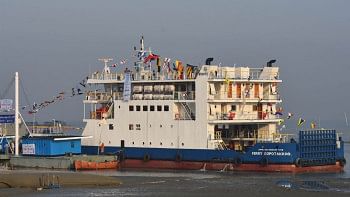Building tourism park faces challenges
Bangladesh Economic Zones Authority has started implementing the plan to set up an exclusive tourism park at Sabrang in Teknaf, but a lack of infrastructure and the rehabilitation of farmers remain the major challenges.
Since the site is vulnerable to flood and storm surges, the developer or authorities will have to bear high expenses for embankments and landfills, according to a pre-feasibility study report.
A lack of urban infrastructure, such as telecom, water and power supplies and water treatment systems, will be one of the major challenges to setting up the tourism park, the report said.
As about 44 percent of economic activities in the locality depend on farming, the rehabilitation of farmers will be a major concern.
South Korean DOHWA Engineering Company conducted a pre-feasibility study that was presented at a workshop on "stakeholder consultation on interim report of pre-feasibility study of Sabrang tourism park and conceptual planning of Anowara-2 economic zone" at BEZA headquarters in Dhaka recently.
"The site is part of the longest beach in the world. It is close to Saint Martin's island," according to the report, which was presented by Lee Sang-hyun, senior urban designer of DOHWA.
A new coastal road can be a direct route from an upgraded airport, the report added.
BEZA is setting up the tourism park on about 1,027 acres of land at Sabrang, which will create employment opportunities for about 25,000 people.
"It will be the first of its kind in Bangladesh and help attract not only tourists, but also investment from both home and abroad," Paban Chowdhury, executive chairman of Beza, told The Daily Star.
There are many tourism sites in the country, but none of those has modern amusement facilities, he said. "The Sabrang tourism park will be equipped with amusement facilities as well as accommodations meeting global standards."
Ocean-park, golf course, hotels and resorts, duty-free shopping mall, food courts, souvenir shops, hospital, theatres, helipad, business centres, 3D aquarium and prayer's hall will be set up in the zone, according to the report.
Tourists will also be able to take part in surfing, bungee jumping, buggy car driving, scuba diving and hang gliding.
Some eco-tourism facilities such as trekking and cycling and traditional cultural events such as dance performance and Bangladeshi cuisine will also be available.
The park will boost tourism and reduce the country's dependence on the apparel sector for export earnings, the report said.
Bangladesh's tourism industry amounted to around $3.7 billion or 4.1 percent of GDP in 2014, and it is forecasted to increase to about $15 billion or 4.4 percent respectively in 2025, the report added.
The travel and tourism sector yielded about 1.98 million jobs including indirect employment, accounting for about 3.6 percent of total employment. The sector's total contribution to employment generation is also expected to reach 2.49 million in 2025, accounting for about 3.6 percent of total employment.
The sector recorded about $752 million in investment till 2014 that may stand at approximately $1.6 billion in 2025, according to the report.
The tourism park is one of the four economic zones that BEZA is setting up under the public sector. The three other public economic zones are: Mirsarai Economic Zone in Chittagong, Mongla Economic Zone in Bagerhat and Srihatta Economic Zone in Moulvibazar.
Under the private sector, BEZA awarded a final licence to Meghna Group of Industries last month for setting up Meghna Economic Zone in Narayanganj.
The authority also awarded prequalification licences to nine local private companies to set up 10 other economic zones -- one each to AK Khan and Company, Abdul Monem Ltd, Meghna Group, Bay Group, Aman Group, Maisha Group, United Group, Unique Group and two to Bashundhara Group.
BEZA plans to develop 100 economic zones by 2030 on 75,000 acres to create jobs for one crore people and produce goods and services worth $40 billion.

 For all latest news, follow The Daily Star's Google News channel.
For all latest news, follow The Daily Star's Google News channel. 



Comments